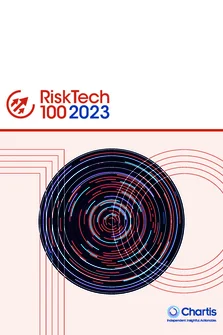<p>In this report, Chartis covers the most crucial aspects of Dodd-Frank in detail and covers their consequences for participants in financial markets, both in and outside the US. This includes the possible organizational and technological impacts on firms that need to comply. The report also covers the relationship of Dodd-Frank to other international regulatory regimes.</p>
<p>The ‘Dodd-Frank Wall Street Reform and Consumer Protection Act’ (referred to as Dodd-Frank) is one of the most comprehensive financial reforms of the last century. The areas covered include the following major objectives of Dodd-Frank:</p>
<ul>
<li><strong>Protection of consumers</strong> – To protect homeowners in real estate transactions and require banks to verify a borrower’s income, credit history and job status;</li>
<li><strong>Preservation of financial stability</strong> – To monitor risks affecting the entire financial industry, oversee hedge funds, and increase capital and liquidity reserve requirements to mitigate risks;</li>
<li><strong>Volcker Rule</strong> – To prohibit banks from owning, investing in or sponsoring any proprietary trading operations for their own profit;</li>
<li><strong>Regulation of risky derivatives</strong> – The riskiest derivatives are either regulated by the SEC or the Commodity Futures Trading Commission (CFTC). In this way, excessive risk-taking can be identified. In addition, hedge funds must register with the SEC and provide data about their trades and portfolios.</li>
</ul>
<p>The number of regulatory measures in Dodd-Frank is a challenge in itself and non-US based financial institutions also need to understand the differences and overlaps within other international regulatory requirements. For US banks, a major challenge will be the pace at which Dodd-Frank is implemented and the demand for regulatory transparency as well as the number of regulatory risk reports they need to generate.</p>
<p>Firms need to build technology systems that can meet compliance requirements, including a common financial analytics, regulatory reporting, and data management framework.</p>
Only users who have a paid subscription or are part of a corporate subscription are able to print or copy content.
To access these options, along with all other subscription benefits, please contact info@risk.net or view our subscription options here: http://subscriptions.risk.net/subscribe
You are currently unable to print this content. Please contact info@chartis-research.com to find out more.
You are currently unable to copy this content. Please contact info@chartis-research.com to find out more.
Copyright Infopro Digital Limited. All rights reserved.
As outlined in our terms and conditions, https://www.infopro-digital.com/terms-and-conditions/subscriptions/ (point 2.4), printing is limited to a single copy.
If you would like to purchase additional rights please email info@chartis-research.com
Copyright Infopro Digital Limited. All rights reserved.
You may share this content using our article tools. As outlined in our terms and conditions, https://www.infopro-digital.com/terms-and-conditions/subscriptions/ (clause 2.4), an Authorised User may only make one copy of the materials for their own personal use. You must also comply with the restrictions in clause 2.5.
If you would like to purchase additional rights please email info@chartis-research.com


